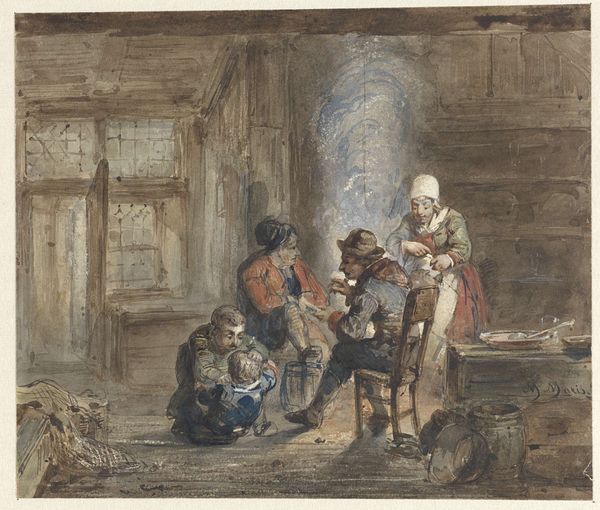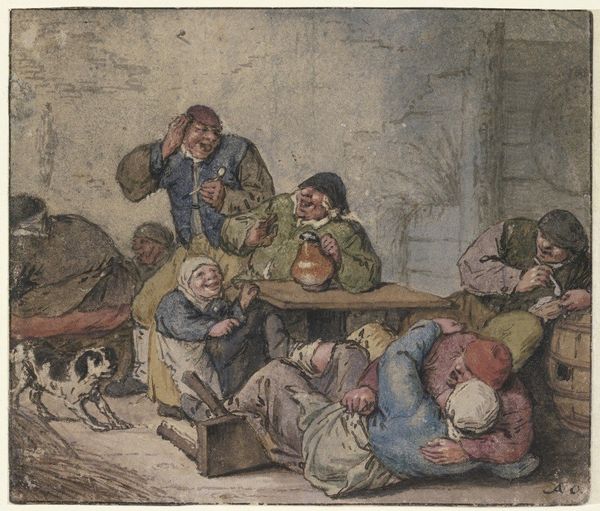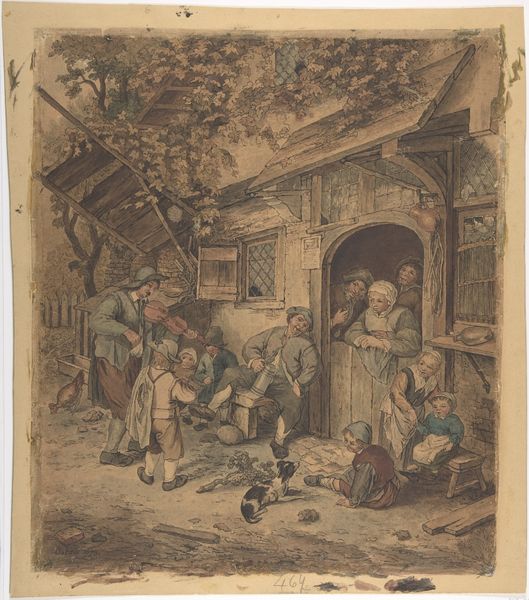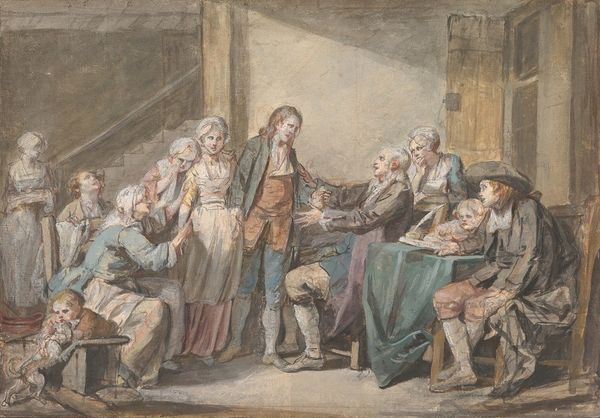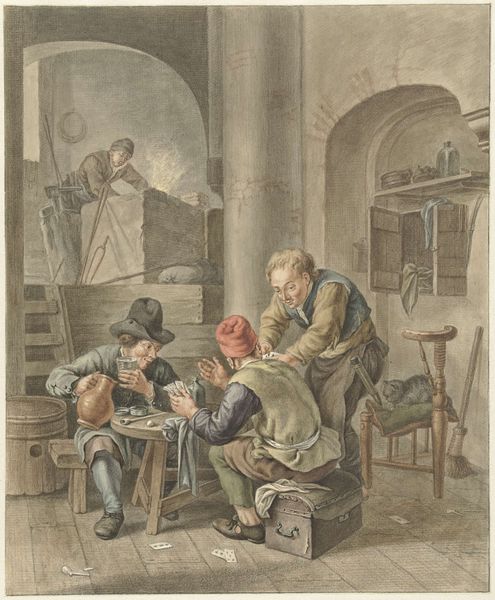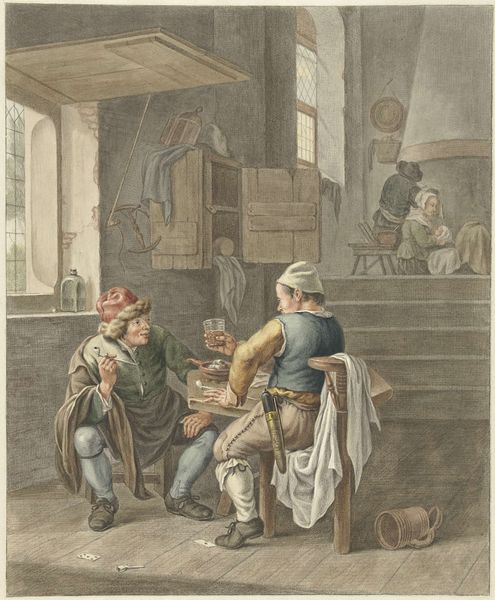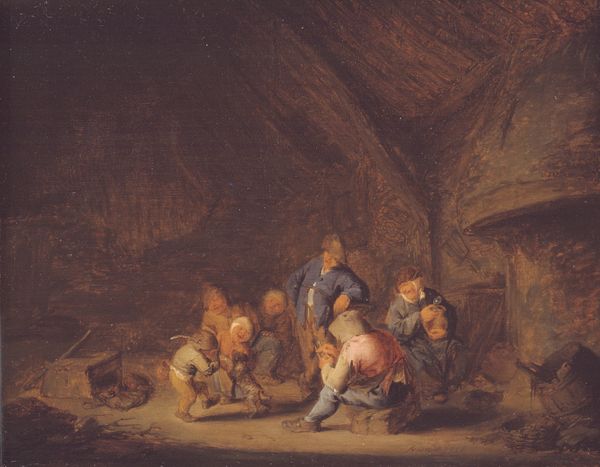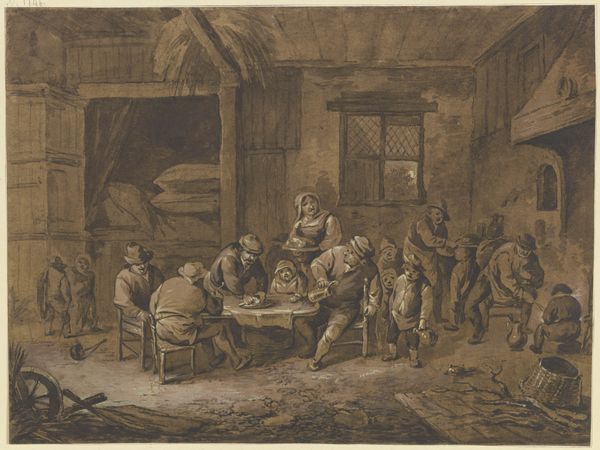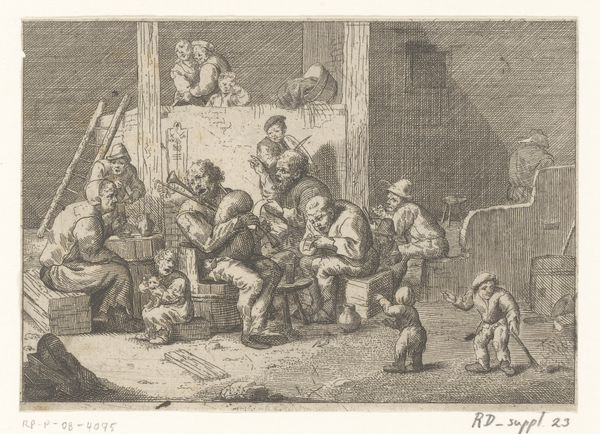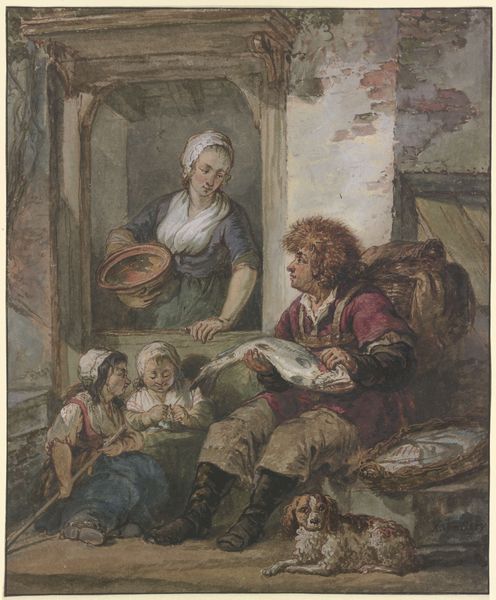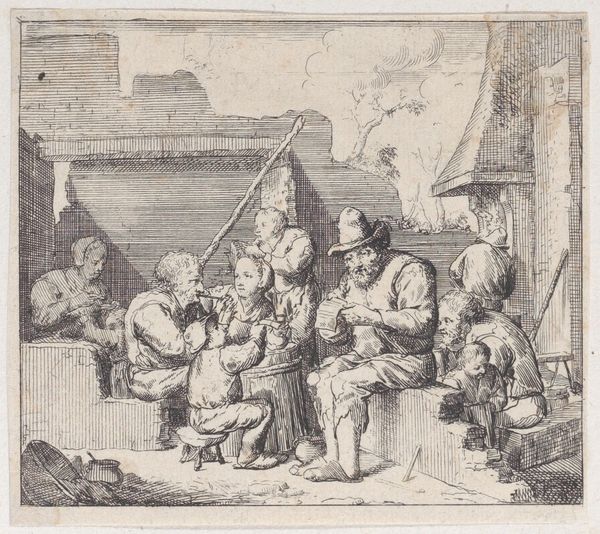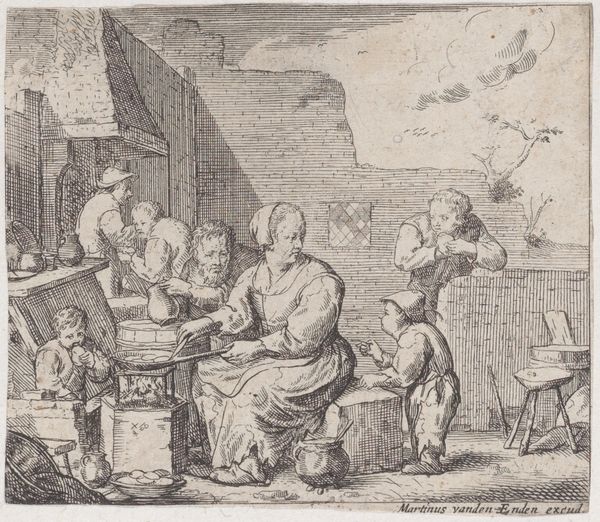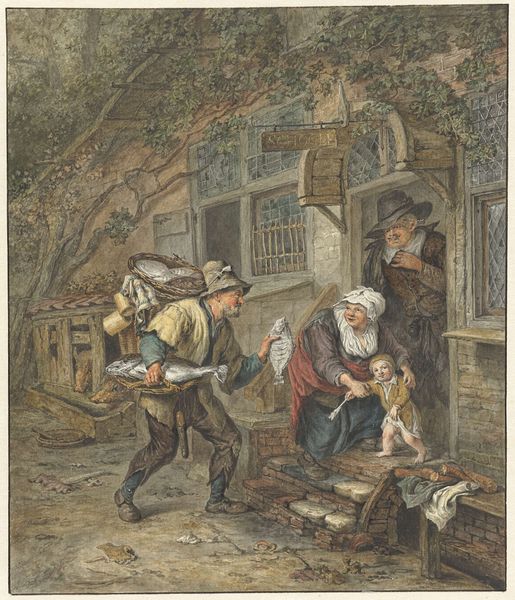
drawing, watercolor, ink
#
drawing
#
dutch-golden-age
#
figuration
#
watercolor
#
ink
#
coloured pencil
#
genre-painting
Copyright: Public Domain: Artvee
Curator: Here we have Adriaen van Ostade's "Peasants Drinking," likely rendered sometime between 1610 and 1685. It's an ink and watercolor drawing, touched with coloured pencil. Editor: What a scene! It feels so… contained. There’s a warmth radiating from this depiction of common folk. Almost earthy. Curator: Earthy indeed! Van Ostade frequently depicted peasant life; genre painting like this offers invaluable insight into the material culture of the Dutch Golden Age. Notice the details in their clothing – the coarse fabrics, the simple construction – indicative of the limited resources available to the working class. Editor: My eye is drawn to the repetition of bent heads. It suggests shared vulnerability, doesn't it? Heads bowed in revelry or perhaps defeat. The image certainly evokes feelings of communal experience and the intoxicating effects, maybe even the dangers, of collective spirit consumption. Curator: Precisely! Consider also the context. Taverns like this weren't merely places of leisure. They functioned as sites of social exchange, economic transaction, even political discourse for those excluded from more formal venues. The objects depicted - the tankards, the rudimentary furniture - underscore the lived realities of these individuals. The materiality tells a clear story of societal structures. Editor: You can certainly read that vulnerability in the weary postures and flushed faces, their bodies telling the story. Even the limited palette of earthy tones suggests the emotional gravity weighing them down and, equally, the potential of momentary escape. Ostade emphasizes these faces, giving us glimpses into lives marked by hardship. Is it too much to read symbolism of Bacchus or Silenus here? Curator: I find it difficult to assert a singular interpretation, but perhaps we can conclude that the imagery resonates. The tools, the clothes, even the expressions. Ostade masterfully uses line and wash to evoke an atmosphere of both conviviality and constraint. These very specific elements of material culture give us direct access to understanding. Editor: In the end, this artwork embodies the push and pull between daily toil and the allure of communal release. Ostade successfully captures the symbology, the feeling, and human spirit that existed between. Curator: Indeed, the artistic process of "Peasants Drinking" allows us entry into a deeper understanding of the complexities of life in that moment.
Comments
No comments
Be the first to comment and join the conversation on the ultimate creative platform.
